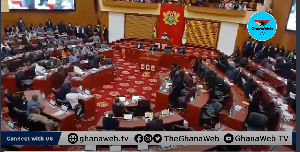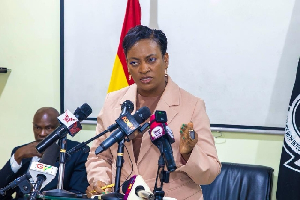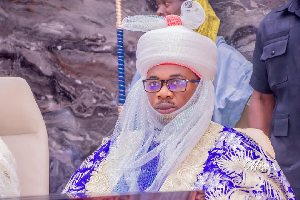..... in the way of gender equality
The 2010 population and census report made a startled revelation on the status of adolescents and children in our society. But just like all matters related to the health of the adolescent girl, that revelation has not received any attention from policy makers and social justice advocates. In the census report published in 2012, table 11 contained data on the population 12-17 years by sex, marital status and region. The data indicated that out of a total of 3,254,007 children within 12-17 years old, 176,103 representing 5.4% were married. Yes, married as children! The situation is more disturbing when one takes a careful look at the data at the regional level. For instance, in the three regions of Northern, Upper East and Upper west alone, out of a total of 567,554 children between the ages of 12 to 17 years, 43,311 of them were married. Among these married children of the three regions of the north, 23,050 were girls.
It is impossible for any nation to address poverty, gender equality, maternal and child mortality with this kind of statistics. Early marriage stands in direct conflict with the objectives of the Millennium Development Goals (MDGs). It threatens the achievement of the main goals of eradicating extreme poverty and hunger, achieving universal primarily education, promoting gender equality and empowering women, and reducing child mortality. A later marriage is a precondition for the attainment of girls’ personal goals of completing school, acquiring key skills and understanding roles in family and in society, which are closely linked to the MDGs.
When a young girl becomes a bride, the consequences are lifelong – for the girl, for her family and for the nation. The common thread in child marriage is that the girl herself has no say. She is robbed of her rights and her childhood. Child marriage undermines efforts to reduce abject poverty and to build a society that is more equal. It is a violation of human rights, contravening both the Convention on the Rights of the Child and the Convention on the Elimination of All Forms of Discrimination against Women. Ending child marriage will accelerate efforts to achieve a safe, healthy and more prosperous future for girls in Ghana.
To end child marriage, the factors, the determinants and the impact of the practice of child brides need to be discussed and brought to the fore of decision makers. In this article, I make an attempt (based on the available evidence and anecdotal data) to highlight some of the factors shaping child marriage in the Ghanaian society. Some of the key factors that cause child marriage include poverty, concerns about security and protection of girls, lack of education or distance to schooling facilities, gender discrimination, cultural traditions, and religious traditions. Other elements that can influence rates include:
o Weak birth registration systems, which prevent girls from providing official proof that they are too young for marriage.
o The lack of an adequate legislative framework that can be enforced to address cases of child marriage. Even though Ghana has legislation for a minimum legal age for sex and for marriage, this is often not effectively enforced.
o The lack of harmonisation with customary laws that may condone the practice of child marriage. Globally, child marriage is generally more prevalent in jurisdictions that offer fewer protections for women and girls. The high prevalence of child marriage in Ghana is an indication of the societal attitude towards women and girls.
The impact of child marriage on our developmental process as a nation is obvious. Child marriage is linked to poverty and impacts national productivity. Child marriage is most common in the poorest regions and is often concentrated among the poorest households. It is closely linked with low levels of economic development. There is evidence indicating that girls from poor families are nearly twice as likely to marry before 18 as girls from wealthier families, as marriage is often seen as a way to provide for a daughter’s future. However, the truth is that girls who marry young are more likely to be poor and remain poor. Girls who marry young do not receive the educational and economic opportunities that help lift them out of poverty and which are necessary to build a sustainable and prosperous future for their communities. Educated and healthy women work more productively, contributing to greater national productivity and higher GDP. They spend more money on food, housing, education and income-generating activities, all of which reduce poverty levels and promote sustainable development.
Child marriage undermines a child’s right to education. Child marriage denies children of school age their right to the education they need for their personal development, their preparation for adulthood, and their ability to contribute to their family and community. Married girls who would like to continue schooling may be both practically and customary excluded from doing so. Girls with higher levels of schooling are less likely to marry as children. With more than half of Ghana’s population under the age of 25, educating youth is crucial to ensuring a sustainable and prosperous future.
Child marriage entrenches gender inequality. Child brides have little say in whether, when or whom they will marry. In many cases their husbands are much older. Available evidence shows that girls who marry before the age of 18 are more likely to experience violence within marriage than girls who marry later. Marriage often ends girls’ opportunities for education, better paid work outside the home, and potential decision making roles in their communities. Eliminating gender inequalities and empowering young women requires the fulfilment of girls’ basic needs and their rights such as education, health and nutrition, which are undermined by child marriage.
Ending child marriage will help to reduce child mortality and improve maternal health. Child brides are under intense social pressure to prove their fertility, which makes them more likely to experience early and frequent pregnancies. Close to 90% of adolescent pregnancies in the country are to girls who are already married. Early pregnancy endangers child brides’ health because many become pregnant before their bodies can safely carry or deliver children. It is particularly severe for girls who give birth before the age of 15 as evidence show that they are five times more likely to die in childbirth than girls in their 20s. Perinatal deaths are 50% higher among babies born to mothers under 20 years of age than among those born to mothers aged 20–29 years.
Adolescent girls and young children by nature do not have a voice. Their lives are determined by a complex set of interactions between a host of social and demographic factors. The magnitude of these interactions is determined by factors both endogenous (e.g., sex, age or ethnic affiliation) and exogenous (e.g., social, political and economic environments or urban versus rural area of residence) to the young people themselves. No absolute conclusions can be made about the relationships between these factors, the direction of causality or how they impact each young person. Drawing these types of conclusions is not the purpose of this article as more in-depth and complex research would be necessary to begin answering the question. The purpose of this article is, however, to open the debate and encourage policy-makers, program planners and other stakeholders from government and civil society to thoroughly, strategically and creatively think about the plight of the adolescent girl. In order to do this in an effective manner, there needs to be a high-level commitment originating from within the government to support the establishment of targeted, evidence-based policies and interventions for different subgroups of youth, with a focus on young girls in order to reach the most marginalized and at risk populations. The time is here for policy-makers and program designers from different sectors to make the case for targeted investments directed at the needs of the most vulnerable, in particular girls. The effort to build a deep and broad evidence base on the lives and experiences of young people in an attempt to draw out the specific details of those living on the margins will be strengthened by a unified attempt to understand how these data are required to inform the development and measurement of national development goals and objectives. My call goes to the minister of Gender, Children and Social Protection. Hon. Nana Oye Lithur, before you became a minister of state, you were vociferous in your fight for the rights of the marginalised in our society. Please, remember the rights of adolescent girls while you are in-charge of that ministry. My second call goes to the population council of Ghana. Your very young population is being “forced” into marriage. What are you doing about it? My last call goes to this grey group call “civil society”. How civil can a society be if girls are brides? Let’s rise up and advocate for a comprehensive national strategy to address child marriage in the country. Together, we can do something to protect the rights and health of the adolescent girl!
The write is the PRO of the Ghana Public Health Association and the Executive Director of the Youth Harvest Foundation Ghana. He is also a leading member of the GirlsNotBrides Ghana movement. You can reach him via jk@harvestmail.org
Opinions of Monday, 19 January 2015
Columnist: Krugu, John Kingsley
As long as it exists, child marriage will stand ....
Opinions













